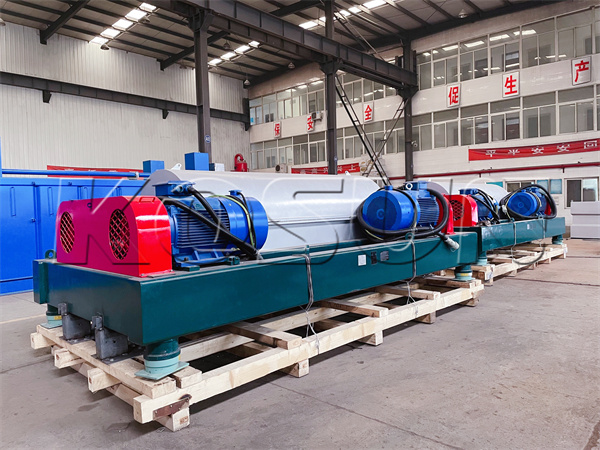

What maintenance and cleaning procedures are required for a drilling mud centrifuge?
Pub Date:Jul 17, 2023 | Views:87 |
To ensure proper functioning and longevity of a drilling mud centrifuge, regular maintenance and cleaning procedures are essential. Here are some important maintenance and cleaning procedures:

1, Lubrication: Regularly lubricate the bearings, gears, and other moving parts as per the manufacturer's recommendations. This helps prevent wear and tear and ensures smooth operation.
2, Inspection: Conduct routine inspections to check for any signs of damage or abnormal wear. This includes examining the centrifuge bowl, conveyor, discharge ports, and other components for any cracks, leaks, or unbalanced wear.
3, Belt tension and alignment: Check and adjust the belt tension and alignment to ensure proper operation. Misaligned belts or improper tension can lead to reduced performance and premature failure of the centrifuge.
4, Cleaning the bowl: Regularly clean the centrifuge bowl to remove any solid deposits or built-up residue. This can be done by disassembling the bowl and using appropriate cleaning agents or solvents to dissolve and remove any material adhered to the inner surfaces.
5, Cleaning the scroll or conveyor: The scroll or conveyor inside the centrifuge should also be cleaned to remove any accumulated solids or debris. This can be done by removing the conveyor and manually cleaning it or using water jets to flush out any trapped material.
6, Safety checks: Ensure that all safety mechanisms, such as emergency stop buttons or sensors, are in proper working condition. Conduct regular tests to confirm that these safety features are operating correctly.
7, Calibration: Periodically calibrate the centrifuge to ensure accurate readings and optimal performance. This may involve checking and adjusting speed sensors, flow meters, and other monitoring instruments.
8, Spare parts inventory: Maintain a spare parts inventory, including critical components such as bearings, seals, and belts. This ensures that any necessary repairs or replacements can be done promptly, minimizing downtime.
9, Documentation: Keep records of all maintenance activities, including inspections, repairs, and parts replacements. This helps track the maintenance history and assists in planning future maintenance schedules.
10, Follow manufacturer's recommendations and guidelines: Always refer to the manufacturer's instructions and guidelines for specific maintenance and cleaning procedures. Each centrifuge may have unique requirements, and following these recommendations ensures proper care and prolongs the equipment's life.
Remember, the above procedures are general guidelines, and it is important to consult the specific maintenance manual provided by the centrifuge manufacturer for detailed instructions applicable to your particular model.